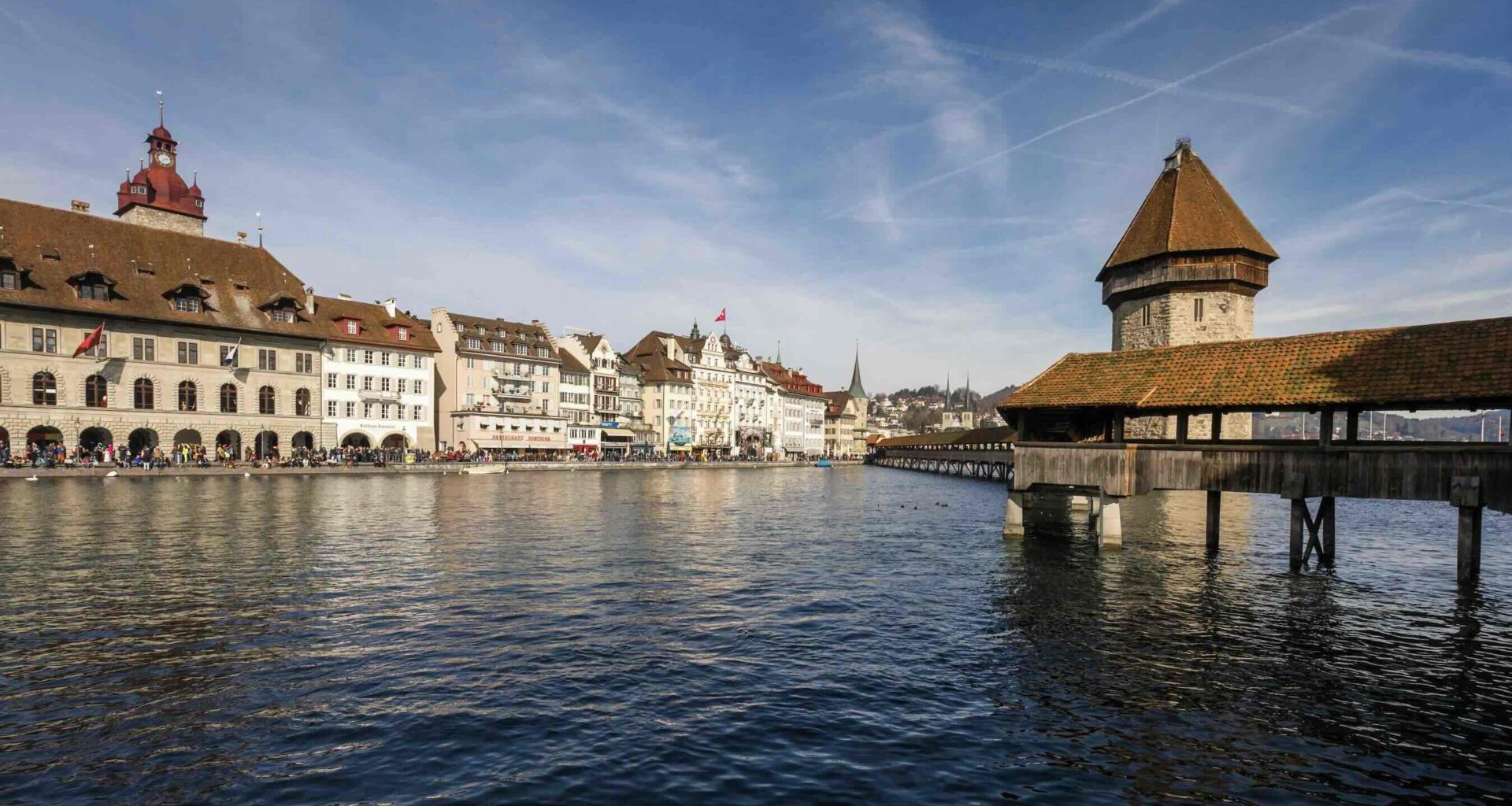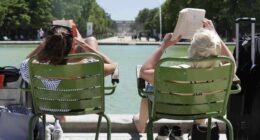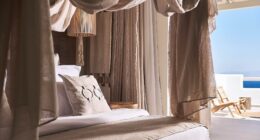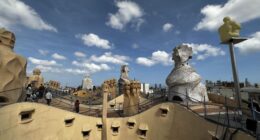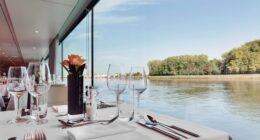Photo: Uwe Conrad / Unsplash
Commissions may be earned from LuxuryEurope’s affiliate partner links.
There is just something about the place names in Switzerland that lends a feeling of sophistication and romance. My wife and I are people-watching, sitting outside the Rathaus Brauerei on the banks of the River Ruess. We are nibbling on a tasty pretzel pastry and sipping on a wheat beer brewed right on the premises in big copper cauldrons and served in tall thin glass steins.
It is a beautiful, sunny spring day, and the feeling of amour is in the air. Students, young men and ladies, flirt along the concrete boulevard that hugs the riverbank. Elegant white swans float alongside looking for handouts. A refreshing breeze blows off the turquoise waters of Lake Lucerne, twirling through the charming, medieval, cobblestone streets of Lucerne.
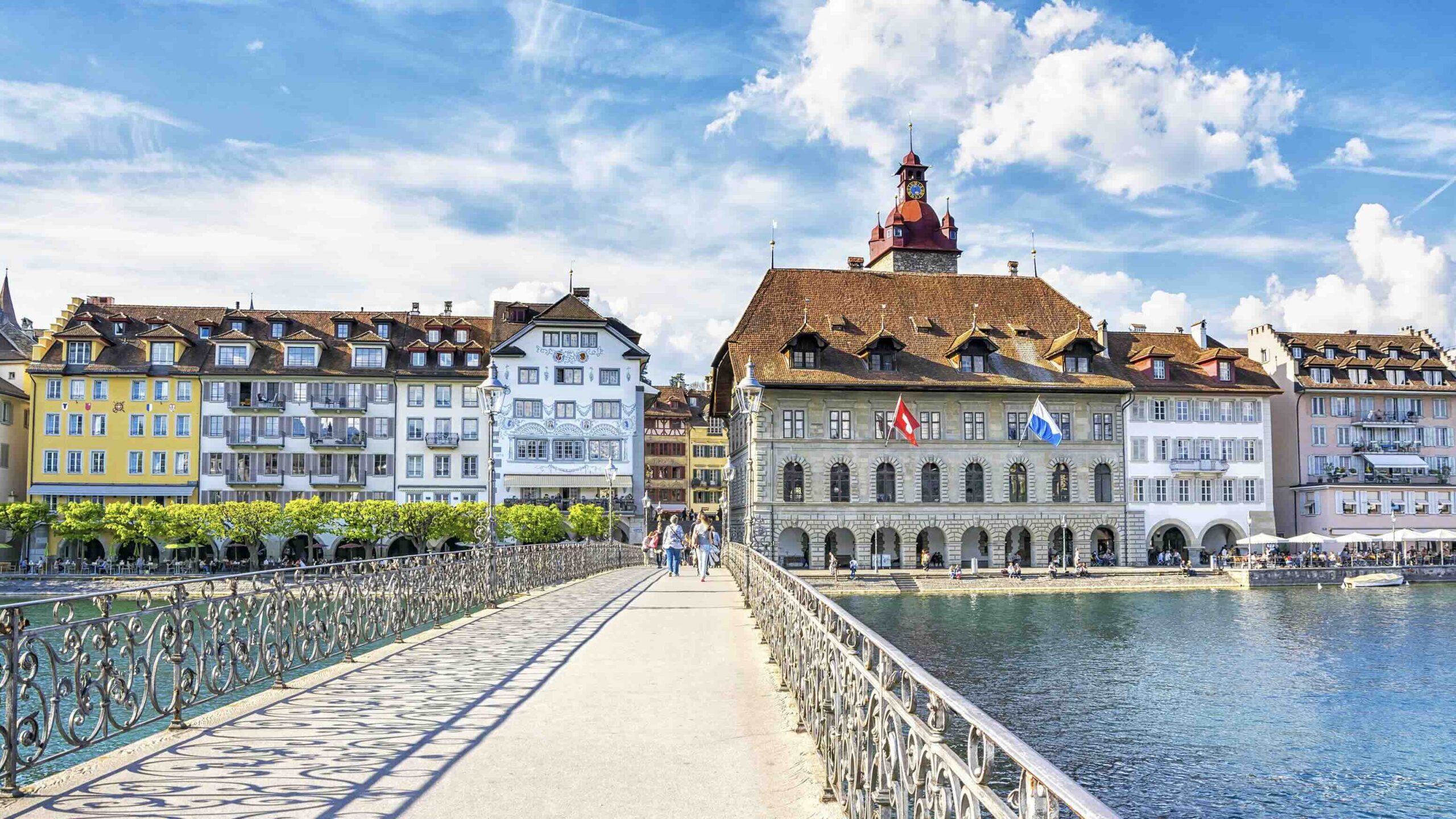
The idyllic town of 60,000 is one of the prettiest cities I have visited. Built astride the river at the western tip of the lake, it has long served as the geographical and spiritual heart of Switzerland. After the opening of the Gotthard Pass in the early 13th century, the city had grown wealthy as an important staging post on the route between Italy and northern Europe. It joined the young Swiss Confederation in 1332.
Lovely Lucerne: A River Runs Through It
We had arrived in Lucerne that morning. After an hour’s rail trip from Zurich, we stepped into the transparent entrance hall of Lucerne’s impressive train station with its elegant curved roof, and then strolled through the massive arch at the entrance, the main portal of the old station. First on our itinerary is a leisurely walk through Old Town.
The river splits the town, flowing rapidly to the northwest where the lake ends. We cross the waterway on the famous Kapellbrucke, Chapel Bridge. This covered, wooden bridge is the centrepiece of Lucerne, and one of the oldest bridges of its type in Europe. Built in 1333 as a part of the city’s fortifications and named after nearby St. Peter’s Chapel, the bridge is over 550 feet long and, uniquely, crosses the river diagonally.
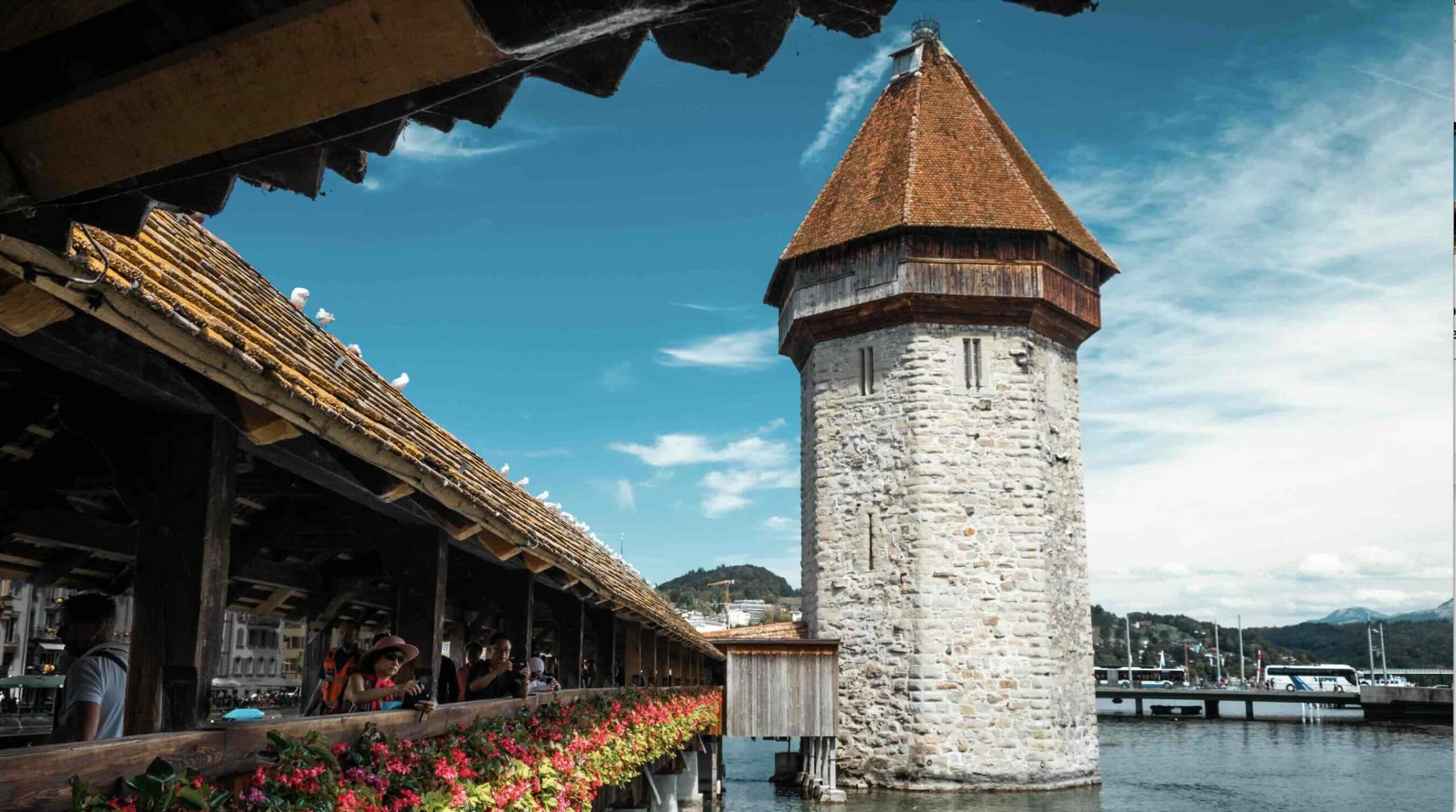
In the 17th century, paintings depicting scenes of Swiss and local history were added on plaques hanging from the ceiling of the bridge. One of the panels depicts William Tell shooting the apple from his son’s head. Wasserturm, the Water Tower, is a massive stone tower that was added to the bridge. This 111-foot-tall octagonal tower is said to have been used as a prison, a watch tower and, now, as Guild Hall for municipal meetings.
The Dying Lion of Lucerne
Our route returns us across the River Ruess on the Spreuer Bridge, completed as a part of the city fortification in 1408. Between 1626 and 1635, Kaspar Meglinger added 67 macabre paintings which represent the Dance of Death. In each piece of haunting artwork, the spectre of death is depicted as always at our sides. Undaunted, we carry on, meandering through the narrow alleys, past 15th-century houses, their façades painted with colourful frescoes.
The Jesuit church dating from the 17th century is regarded as Switzerland’s first sacral Baroque building, and the twin towers of the Hofkirche form an integral part of the townscape. A part of the 14th-century rampart wall is preserved along with nine of its towers, three of which are open to the public. We climb their wooden staircases for a view of the city. The oldest city clock, built by Hans Luter in 1535, is in the Zyt tower and is allowed to chime one minute early each hour in deference to its age.

A moving and remarkable sculpture, The Dying Lion of Lucerne, is carved out of the side of a granite cliff. The monument commemorates the Swiss soldiers who died in the French Revolution. Commissioned by one of the survivors and designed by a Danish sculptor, the monument can bring tears to your eyes. Mark Twain described the Lion of Lucerne as “the saddest and most moving piece of rock in the world.” Feeling sad we opt for our riverside beer.
Cruising Lake Lucerne
We tarry by the quayside and watch the comings and goings of the lake steamers which head up the lake calling in at villages. On a whim, we hop aboard a comfortable steamer for a two-hour cruise.
The boat zigzags its way through the 24-mile-long, nearly two-mile-wide lake, throwing open beautiful sights of snow-peaked mountains and stopping at places on both shores.
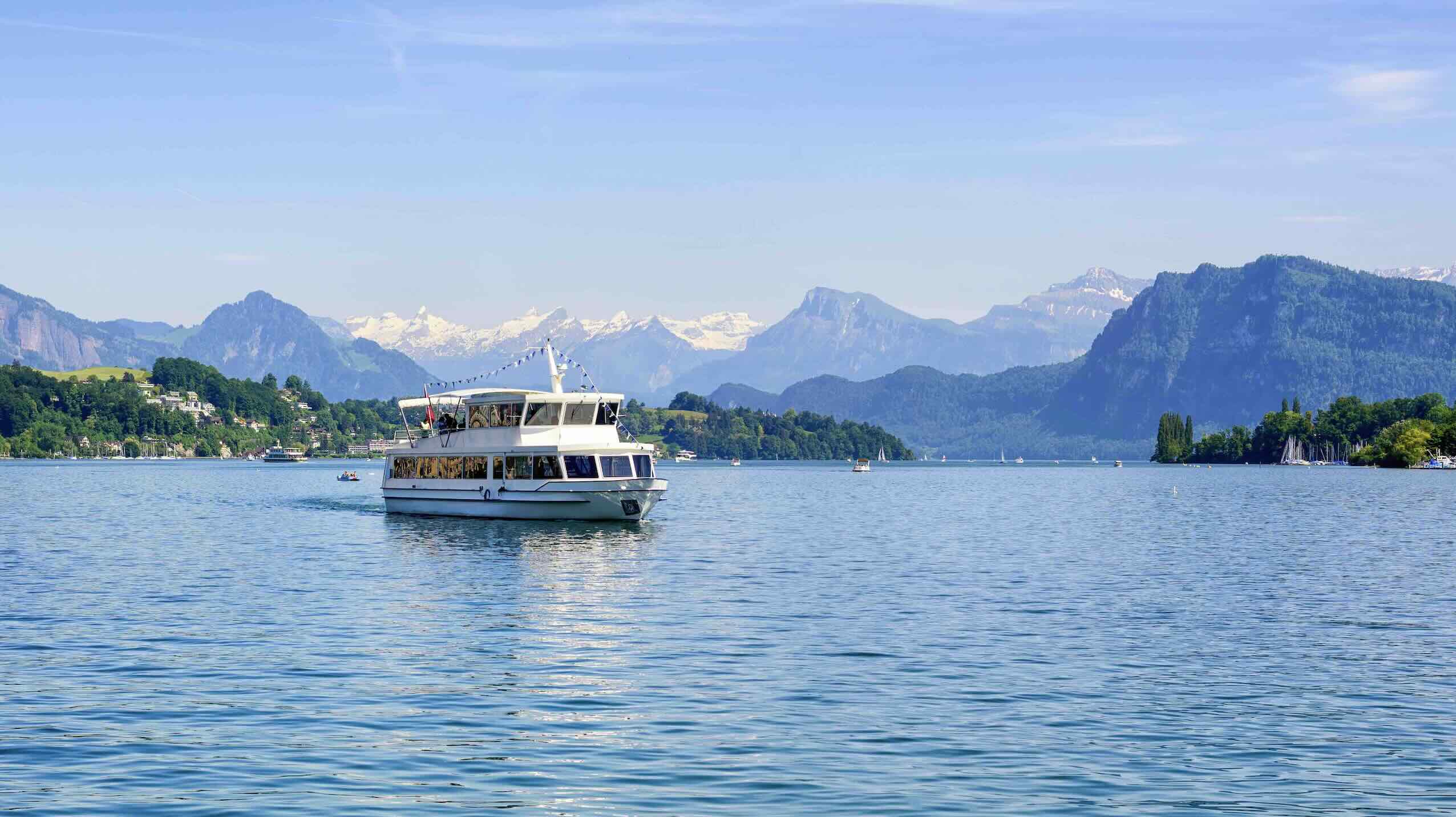
With its impressive mountainous panorama, it is somewhat reminiscent of Norway’s spectacular fjords yet remains characterized by a mild lake climate.
We jump off at Weggis for a taste of homemade cheese and a sip of wine and then board the next boat headed homeward.
Fast Facts and Fun Stuff
Lucerne’s location puts it at a crossroads to several other Swiss cities but, because of its size and mountain setting, there’s no airport apart from a small affair located near the opulent Bürgenstock Hotels & Resort that’s used by celebrities and wealthy clients of one of Europe’s most luxurious places to stay. It is, however, well-served by Swiss Rail and its brand-new station puts you right at the heart of tourist Lucerne.
Lucerne has a packed festival calendar: Carnival breaks out at the end of February, the Old Town Festival takes place in June, and the Lucerne Festival Sommer occurs during August and September.
For more information about what is undoubtedly one of the best places to visit in Switzerland, visit Tourism Lucerne’s website at www.luzern.com or Switzerland Tourism at www.myswitzerland.com.
___________________
Contributor James Ross writes about destinations and travel adventures for various international publications. You can see more of his work at www.thejamesross.ca.
